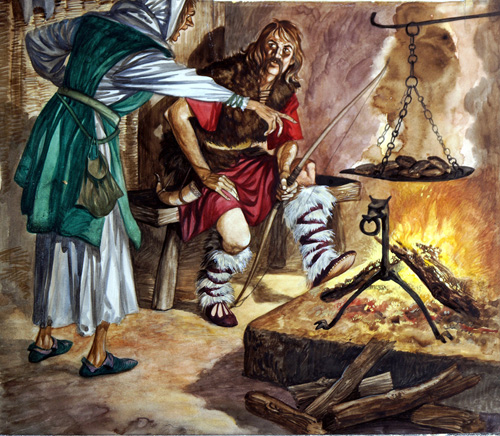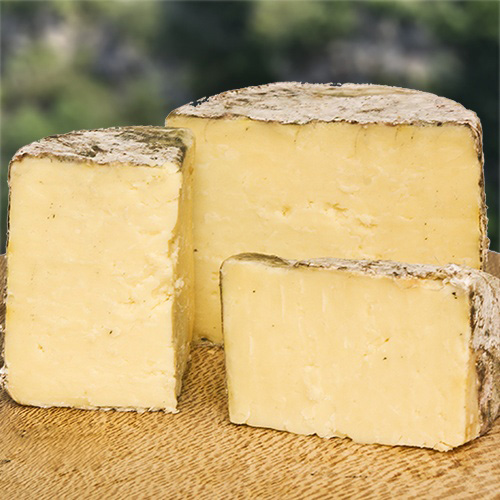




Back to the Somerset Page

- The Royal Connection
- Somerset Eats
- Owlbut's Birdwatch
- Somerset VIPs
 Back in the ninth century, toward the end
of it, the Vikings were trying to conquer all England. By 878AD only one part remained, the kingdom of Wessex, ruled by King Alfred. At the start of 878 Alfred was
defeated by the Viking King, Guthrum, and was forced to go and hide in the Somerset Levels, a flat marshy area, often flooded even today. By May 878 Alfred had
recovered, formed a new army and defeated Guthrum who he forced to become a Christian.
Back in the ninth century, toward the end
of it, the Vikings were trying to conquer all England. By 878AD only one part remained, the kingdom of Wessex, ruled by King Alfred. At the start of 878 Alfred was
defeated by the Viking King, Guthrum, and was forced to go and hide in the Somerset Levels, a flat marshy area, often flooded even today. By May 878 Alfred had
recovered, formed a new army and defeated Guthrum who he forced to become a Christian.
Although Alfred never became King of all England it was his work in defeating the Vikings that led to his grandson, Athelstan, being accepted as the
first King of all England in 937AD.
Many people know about the legend of King Alfred burning some cakes. A legend is a story or a person, usually from the past, that may or may not be
true. The first mention of this event was in a set of documents written in the twelth century, so 300 years after Alfred ruled. The story goes that Alfred had
taken refuge in a pig farmer's hut and the farmer and his wife looked after him for several days. One day while the farmer was taking his pigs to the fields, the
wife began to bake some bread (not cakes). Alfred, sitting in front of the fire over which the bread cooked and busy plotting how to beat the Vikings, didn't
notice the bread was burning.
The wife came back and told Alfred off for being happy to eat their bread but not to bother to turn the loaves over. Alfred, suitably told off, then
turned the loaves. The pig farmer's hut was in Athelney, now in Somerset.
![]() Back to the top
Back to the top
 The village of Cheddar is in Somerset.
Cheddar cheese is one the best known cheeses in the world so what else could be in this section. Cheddar cheese is a hard cheese and the flavour of Cheddar cheese
differs from other hard cheeses, mainly from the way it is produced. It is certainly the world's most popular British cheese. However, as it does not have
protected designation of origin status, anyone can make cheddar cheese anywhere. However, in 2007, the name West Country Farmhouse Cheddar was protected so
only Cheddar produced from milk from Somerset, Dorset, Devon and Cornwall and made from traditional methods can use that name.
The village of Cheddar is in Somerset.
Cheddar cheese is one the best known cheeses in the world so what else could be in this section. Cheddar cheese is a hard cheese and the flavour of Cheddar cheese
differs from other hard cheeses, mainly from the way it is produced. It is certainly the world's most popular British cheese. However, as it does not have
protected designation of origin status, anyone can make cheddar cheese anywhere. However, in 2007, the name West Country Farmhouse Cheddar was protected so
only Cheddar produced from milk from Somerset, Dorset, Devon and Cornwall and made from traditional methods can use that name.
In the old days Cheddar cheese would be matured in the natural caves around Cheddar Gorge. It is said that cheese made this way was around as
long ago as the 12th century as Henry II was said to be very fond of it. A 19th century Somerset dairy farmer, Joseph Harding, is said to be the father of
Cheddar Cheese. Harding introduced several technical inventions and he and his wife introduced the cheese to Scotland and North America while his sons began
Cheddar cheese making in Australia and New Zealand.
Cheddaring is a term used in the making of the cheese where, after heating, the curd is kneaded with salt, cut into cubes to drain the whey and
then stacked and turned during the maturing period. Extra-mature cheddar needs to be matured for 15 months or more.
The picture above shows Cheddar Cheese from the Original Cheddar Cheese Company and has been aged in caves, just like the old days.
![]() Back to the top
Back to the top
The rock pipit can be found, not unnaturally, on the rocky shores around England. It is a large, chunky bird, slightly smaller
than a starling. You can sometimes see them perched on the rocks or hopping, walking and running as they look for food. They eat insects, beetles, small fish, shellfish
and seeds. Bit of a varied diet there.
The rock pipit has brown, cream and grey streaked feathers with a dirty white chest It has brown legs and a black and yellow beak that is short and
thin. There are 34,000 breeding pairs in the UK and, in winter, a few more arrive from Norway to spend the winter here.
The rock pipit is 16.5 cms in length, has a wingspan of between 23 and 28 cms and can weigh between 20 and 30 grams.

Seven random people who were born in Somerset in the last 100 years:-
Michael Eavis (Farmer and Founder of Glastonbury Music Festival), Mary Berry (Writer, Broadcaster, Cook), John Cleese (Comedian, Actor), Vanessa White (Singer),
Alice Temperley (Fashion Designer), Dame Jacqueline Wilson (Author - Tracy Beaker series) and Bill Bailey (Comedian, Actor, Musician)
![]() Back to the top
Back to the top

